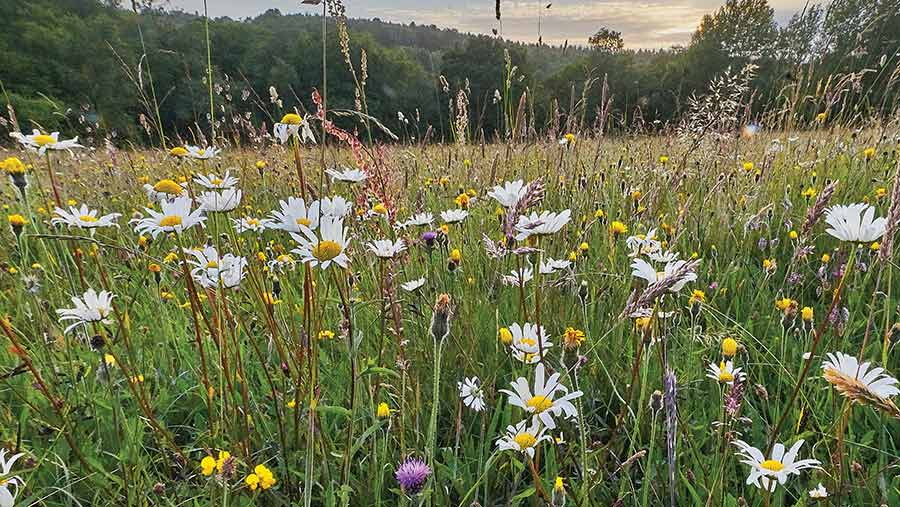Business Clinic: Landowner questions on BNG issues
 © Matthew J Thomas/iStock photo
© Matthew J Thomas/iStock photo Whether it’s a legal, tax, insurance, management or land issue, Farmers Weekly’s Business Clinic experts can help.
Mark Russell, a partner with Carter Jonas, addresses some important questions on biodiversity net gain (BNG) from the landowner’s perspective
Q: I am looking into BNG options and have a few questions.
Does a developer have to replace biodiversity like for like, that is, to account for loss of or impact on a hedge, do they have to buy hedge credits of the same level of distinctiveness (or more if it is out of their local planning authority area)?
Secondly, what might happen if a developer were to fall into liquidation part-way through the term of the scheme? Is the farmer still bound to deliver it but with no income? Can it be resold elsewhere?
Finally, will tying your land with 30-year obligations (with a forward income stream and a forward commitment to ongoing spending) affect the capital value of the land if it were sold?
A: The trading rules built into the Defra metric governing calculation of BNG values mean that the developer must replace any lost habitat/hedgerow/watercourse with the same or a better habitat based on its distinctiveness rating.
See also: Business Clinic: How can we check out battery storage offer?
So, for example, with modified grassland which has a distinctiveness rating of “low”, the same distinctiveness or a better habitat is required post-development (supporting the “like for like” or “like for better” principle).
Habitat distinctiveness bands
Each habitat type has been assigned a distinctiveness band based on distinguishing features including species richness, rarity, the extent to which it is protected by designations and the degree to which a habitat supports species rarely found elsewhere.
For example, hard standing or sealed surfaces have a distinctiveness score of 0 (very low).
Habitats such as blanket bog, however, are given a score of 8 (very high), being highly threatened, internationally scarce and requiring conservation.
Any loss of this type of habitat wouldn’t be supported under the metric and a bespoke arrangement would be required.
BNG units can be paid for either by a lump sum at the beginning of the 30-year term or as a series of payments.
However, in our experience so far, the vast majority of the sales are by way of a lump sum. Also, as the supplier of BNG units you can set the terms on which you would be willing to sell them.
If you chose an upfront payment, it would not matter what happens to the developer, you will still need to undertake the work.
However, you will need to be sure that your price for your units covers you for all the costs associated with creating, maintaining and monitoring the habitat used to create them, as well as something to cover risks such as inflation and the diminution in value of the land.
Security of payment
If you can find a buyer who is willing to offer a series of payments, you would need reassurance from them that they will pay you for the 30-year term, perhaps by way of funds deposited in an escrow (secure, ring-fenced) account.
Finally, BNG units once allocated to a development are attached to it for the 30-year term so they could not be resold unless that development ceased to exist, and the land used for the development was returned to its pre-development condition.
In relation to the capital value of your land, there are key things to consider:
- The underlying capital value may well be affected by the habitat enhancement or creation works. Some new habitats may be a permanent change; for instance, woodland, which could result in a significant drop in capital values based on current markets and comparable evidence – hence the need to cover this cost in the price you are paid.
- With regard to the financial streams associated with the 30-year obligations, what provisions have been made for future expenditure in relation to ongoing management of the habitats and monitoring? If you as the vendor have sold the units and taken the monetary reward, without making a business plan for future costs, this will likely also affect the subsequent purchase price of the property.
- There is also a wider consideration. In some circumstances, by improving the amenity of a wider holding the whole property may actually increase in capital value. Each set of circumstances will need to be assessed individually.
Do you have a question for the panel?
Outline your legal, tax, finance, insurance or farm management question in no more than 350 words and Farmers Weekly will put it to a member of the panel. Please give as much information as possible.
Email your question to FW-Businessclinic@markallengroup.com using the subject line “Business Clinic”.
